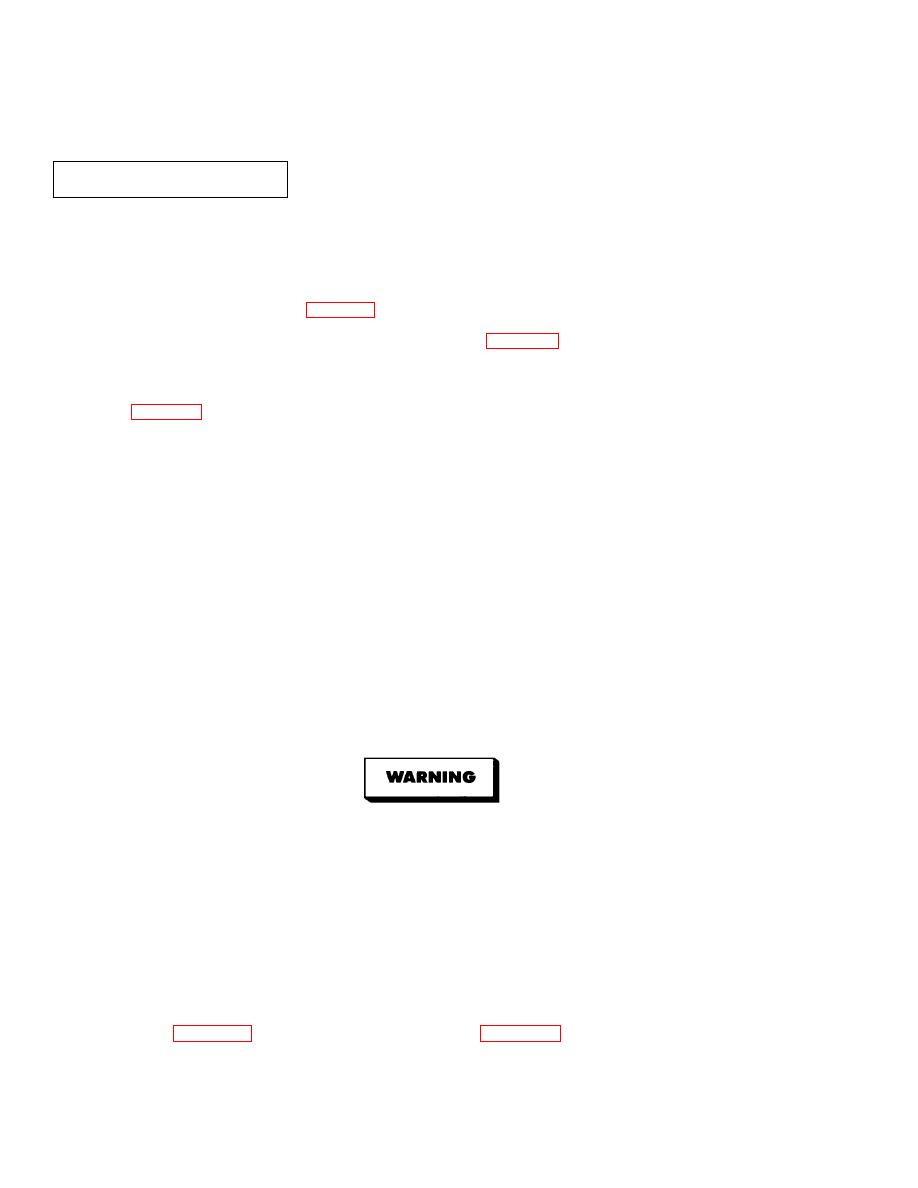 |
|||
|
|
|||
|
Page Title:
Section IV. DIRECT SUPPORT MAINTENANCE PROCEDURES |
|
||
| ||||||||||
|
|
 TM 9-2330-385-14
Section IV. DIRECT SUPPORT MAINTENANCE PROCEDURES
Instructions in this section provide general procedures to be followed for inspection, removal, cleaning, repair,
replacement, or installation of components, and testing authorized at the Direct Support Maintenance level as
specified by the Maintenance Allocation Chart (MAC).
a. Servicing. All services are performed at the Unit Maintenance level of maintenance according to the MAC. If
the trailer needs further service, refer to Chapter 4.
b.
c. Operational Checks. All operational checks included in the maintenance procedures will include the
techniques and methods required to assure the satisfactory performance of the trailer. Reference the Operator's
instructions, Chapter 2, for operation procedures.
d.
Inspection of Components.
(1) Inspect all surfaces in contact with gaskets, packings, or seals for nicks and burrs which might damage the
new seal upon assembly. If any defect is found, remove it before assembly.
NOTE
Defects which may cause bearing binding or misalignment are cause for rejection. Nicks or
gouges outside race load areas are not cause for rejection.
(2) Inspect bearings for rusted or pitted balls, races, or separators. Inspect balls and races for abrasion and
serious discoloration.
(3) Cuts or grooves parallel to ball or roller rotation and fatigue pits (not minor machine marks or scratches
and cracks found during magnetic particle inspection) are causes for bearing rejection.
(4)
Visually inspect all castings and weldments for cracks.
(5)
Clean all parts before inspection. Check for defects such as physical distortion, wear, cracks and pitting.
e.
Cleaning Procedures.
Drycleaning Solvent (P-D-680) is TOXIC and flammable. Wear protective goggles, face
shield, and gloves; use only in a well-ventilated area; avoid contact with skin, eyes, and
clothes, and do not breathe vapors. Keep away from heat or flame. Never smoke when using
solvent; the flashpoint for Type II Drycleaning Solvent is 140 degrees F (60 degrees C) and
Type III Drycleaning Solvent is 200 degrees F (93 degrees C). Failure to do so may result in
injury or death to personnel.
If personnel become dizzy while using cleaning solvent, immediately get fresh air and
medical help. If solvent contacts skin or clothes, flush with cold water. If solvent contacts
eyes, immediately flush eyes with water and get immediate medical attention.
(1) When cleaning ball or roller bearings, place in a basket and suspend in a container of drycleaning solvent,
P-D-680 (Item 22, Appendix E). If necessary, use a brush (Item 6, Appendix E) to remove caked grease or chips.
Avoid rotating bearings before solid particles are removed to prevent damaging races and balls. Lubricate bearings
after cleaning.
|
|
Privacy Statement - Press Release - Copyright Information. - Contact Us |